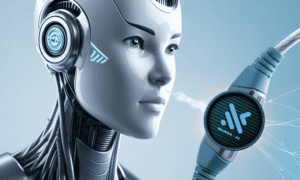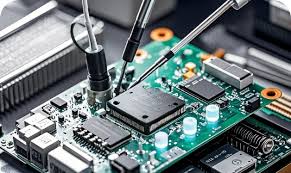Introduction
Drones have emerged as game-changers in various industries, and plumbing is no exception. The integration of aerial inspections and maintenance through plumbing drones represents a significant leap forward in efficiency, cost-effectiveness, and overall effectiveness. This article delves into the transformative impact of plumbing drones, exploring their applications, benefits, and the future they promise for the plumbing industry.
The Rise of Plumbing Drones
Traditional methods of plumbing inspections often involve time-consuming and labor-intensive processes. However, with the advent of plumbing drones, the dynamics of the industry have undergone a remarkable shift. These unmanned aerial vehicles equipped with advanced technology are designed to streamline inspections and maintenance tasks, ensuring a quicker and more precise approach to plumbing-related challenges.
Applications of Plumbing Drones
Plumbing drones offer a wide array of applications that cater to the diverse needs of the industry. One of the primary applications is aerial inspections of pipelines and plumbing systems. Equipped with high-resolution cameras and sensors, these drones can navigate through complex networks, providing real-time visual data to identify potential issues such as leaks, blockages, or structural damage.
Moreover, plumbing drones play a crucial role in preventive maintenance. By conducting routine aerial inspections, professionals can identify and address minor problems before they escalate into major issues, saving both time and resources. This proactive approach contributes to the longevity and optimal performance of plumbing systems.
Efficiency and Cost-Effectiveness
The adoption of plumbing drones translates to increased efficiency and cost-effectiveness for plumbing professionals and businesses alike. Traditional inspection methods often require significant manpower and resources, leading to higher operational costs. In contrast, drones can cover large areas swiftly and with minimal human intervention, reducing labor costs and operational expenses.
Additionally, the speed and precision with which plumbing drones operate result in quicker issue identification and resolution. This not only minimizes downtime but also prevents potential damage to property and infrastructure, further underscoring the cost-saving advantages of this innovative technology.
Environmental Impact
Plumbing drones contribute to environmental sustainability by minimizing the need for invasive and resource-intensive inspection methods. The reduction in the use of heavy machinery and vehicles for inspections translates to lower carbon emissions and a smaller ecological footprint. As the world increasingly embraces eco-friendly practices, the integration of plumbing drones aligns with the global commitment to environmental conservation.
Challenges and Solutions
While plumbing drones offer numerous benefits, they are not without challenges. One key concern is the potential for technical malfunctions or accidents during flight. To address this, ongoing advancements in drone technology focus on enhancing safety features, such as collision avoidance systems and improved fail-safes.
Regulatory frameworks also pose a challenge to the widespread adoption of plumbing drones. Governments and aviation authorities are continually working to establish guidelines and standards for the safe operation of drones in various industries. Collaborative efforts between regulators and industry stakeholders are essential to overcoming these challenges and fostering a conducive environment for the integration of plumbing drones.
The Future of Plumbing Drones
The future of plumbing drones holds exciting possibilities for innovation and growth. Continued research and development in drone technology will likely lead to even more sophisticated and specialized tools tailored to the unique needs of the plumbing industry. Artificial intelligence and machine learning algorithms may further enhance the capabilities of plumbing drones, allowing them to autonomously analyze data and make informed decisions.
Furthermore, increased connectivity and the advent of 5G technology will enable real-time communication between drones and control centers, facilitating swift response to emerging issues. This interconnected ecosystem will redefine the way plumbing inspections and maintenance are conducted, setting new standards for efficiency and reliability.
Conclusion
Plumbing drones are at the forefront of transforming the plumbing industry in the 21st century. Their applications, efficiency, and cost-effectiveness make them invaluable tools for professionals seeking to streamline inspections and maintenance processes. As technology continues to evolve, so too will the capabilities of plumbing drones, promising a future where aerial inspections become the norm rather than the exception. Embracing this innovative technology is not just a leap forward for the plumbing industry but a giant stride toward a more sustainable, efficient, and technologically advanced future.



































